预约演示
更新于:2025-09-09

Astellas Pharma, Inc.
更新于:2025-09-09
概览
标签
肿瘤
泌尿生殖系统疾病
皮肤和肌肉骨骼疾病
小分子化药
ADC
双特异性T细胞结合器
疾病领域得分
一眼洞穿机构专注的疾病领域
暂无数据
技术平台
公司药物应用最多的技术
暂无数据
靶点
公司最常开发的靶点
暂无数据
| 排名前五的药物类型 | 数量 |
|---|---|
| 小分子化药 | 73 |
| 腺相关病毒基因治疗 | 16 |
| 单克隆抗体 | 9 |
| 细胞疗法 | 5 |
| 合成多肽 | 4 |
关联
149
项与 Astellas Pharma, Inc. 相关的药物靶点 |
作用机制 CLDN18.2抑制剂 [+2] |
在研适应症 |
最高研发阶段批准上市 |
首次获批国家/地区 日本 |
首次获批日期2024-03-26 |
靶点 |
作用机制 C5抑制剂 |
在研机构 |
非在研适应症 |
最高研发阶段批准上市 |
首次获批国家/地区 美国 |
首次获批日期2023-08-04 |
1,407
项与 Astellas Pharma, Inc. 相关的临床试验NCT07139977
Open-Label Phase II Trial of Enfortumab Vedotin in Recurrent or Persistent Endometrial Carcinoma
This study is testing a drug called enfortumab vedotin in up to 12 patients with advanced endometrial (uterine) cancer that has worsened after previous treatments, including immunotherapy. The goal is to see how well the drug works and how safe it is. Patients will be treated for up to one year and followed over time to monitor their health and response to the treatment.
开始日期2025-11-01 |
申办/合作机构 |
NCT07110038
DEPECA-1 - DEfeating PEnile Cancer 1 - A Phase II Study to Evaluate a First-line Systemic Therapy With Enfortumab Vedotin Plus Avelumab for Advanced and Metastatic Penile Carcinoma
The DEPECA-1 trial is the first systematic Phase II trial to evaluate response and survival to a combination of antibody-drug conjugate enfortumab vedotin plus the PD-L1 inhibitor avelumab in patients with locally advanced and metastatic penile squamous cell carcinoma (PeCa) in the 1st line setting.
开始日期2025-10-01 |
申办/合作机构 Astellas Pharma GmbH [+2] |
NCT07140016
A Phase 1b Study of Gilteritinib in Participants With Locally Advanced or Metastatic NSCLC With ALK Rearrangement After Prior Treatment With an ALK Inhibitor
Genes give your body instructions on how to make proteins. Proteins are needed to keep the body working properly. Many types of cancer are caused by changes in certain genes, making them faulty. Some people with non small cell lung cancer (NSCLC) have a faulty ALK gene. ALK stands for anaplastic lymphoma kinase. People with NSCLC who have the faulty ALK gene are called ALK-positive. ALK inhibitors are an approved treatment for people with ALK positive NSCLC. Some people stop responding to treatment with ALK inhibitors over time due to more changes happening in their faulty ALK gene, so there is an unmet medical need. Gilteritinib is an approved treatment for people with acute myeloid leukemia (AML) with the faulty FLT3 gene who haven't responded to previous treatment, or their cancer came back after previous treatment. Gilteritinib also blocks changes in the ALK gene which could help people with ALK-positive NSCLC. A study needs to be done with gilteritinib in people with ALK-positive NSCLC.
The main aim of the study is to check the safety of gilteritinib in people with ALK-positive NSCLC and if they tolerate gilteritinib.
People in this study will be adults with locally advanced or metastatic ALK-positive non-small cell lung cancer (NSCLC). Locally advanced means the cancer has spread to nearby tissue. Metastatic means the cancer has spread to other parts of the body. They have stopped responding to treatment with ALK inhibitors, including alectinib or lorlatinib, over time. The key reasons people cannot take part are if they have symptomatic cancers in the brain or nervous system, their cancer has spread to the thin tissue that covers the brain and spinal cord (leptomengingeal metastasis), have recently had or planning to have major surgery, have certain heart conditions, or have recently had an infection, a stroke or mini-stroke.
People in the study will take tablets of gilteritinib once a day in a 28-day cycle. They may be given up to 2 different doses of gilteritinib. People in the study will start on the lower dose but can eventually switch to the higher dose if they tolerate the lower dose and meet the safety checks.
Whilst taking gilteritinib, people will have regular scans of their tumors. People will continue taking gilteritinib until their cancer gets worse, they have medical problems from gilteritinib that they can't tolerate, they ask to stop taking gilteritinib, they start other cancer treatment or, sadly pass away. People will visit the clinic about 7 days and then 30 days after they stop taking gilteritinib. They will be asked about any medical problems and will have a safety check. After this, people who stopped taking gilteritinib, but their cancer hadn't become worse, will continue to have regular scans of their tumors. If their cancer does get worse, they will no longer have scans of their tumors. After finishing gilteritinib, people will be phoned every 12 weeks to check on their health. People will be in the study for up to 4 years, depending on how they respond to gilteritinib.
The main aim of the study is to check the safety of gilteritinib in people with ALK-positive NSCLC and if they tolerate gilteritinib.
People in this study will be adults with locally advanced or metastatic ALK-positive non-small cell lung cancer (NSCLC). Locally advanced means the cancer has spread to nearby tissue. Metastatic means the cancer has spread to other parts of the body. They have stopped responding to treatment with ALK inhibitors, including alectinib or lorlatinib, over time. The key reasons people cannot take part are if they have symptomatic cancers in the brain or nervous system, their cancer has spread to the thin tissue that covers the brain and spinal cord (leptomengingeal metastasis), have recently had or planning to have major surgery, have certain heart conditions, or have recently had an infection, a stroke or mini-stroke.
People in the study will take tablets of gilteritinib once a day in a 28-day cycle. They may be given up to 2 different doses of gilteritinib. People in the study will start on the lower dose but can eventually switch to the higher dose if they tolerate the lower dose and meet the safety checks.
Whilst taking gilteritinib, people will have regular scans of their tumors. People will continue taking gilteritinib until their cancer gets worse, they have medical problems from gilteritinib that they can't tolerate, they ask to stop taking gilteritinib, they start other cancer treatment or, sadly pass away. People will visit the clinic about 7 days and then 30 days after they stop taking gilteritinib. They will be asked about any medical problems and will have a safety check. After this, people who stopped taking gilteritinib, but their cancer hadn't become worse, will continue to have regular scans of their tumors. If their cancer does get worse, they will no longer have scans of their tumors. After finishing gilteritinib, people will be phoned every 12 weeks to check on their health. People will be in the study for up to 4 years, depending on how they respond to gilteritinib.
开始日期2025-09-30 |
100 项与 Astellas Pharma, Inc. 相关的临床结果
登录后查看更多信息
0 项与 Astellas Pharma, Inc. 相关的专利(医药)
登录后查看更多信息
4,541
项与 Astellas Pharma, Inc. 相关的文献(医药)2025-12-31·JOURNAL OF MEDICAL ECONOMICS
Cost-effectiveness of enzalutamide with androgen-deprivation therapy (ADT) versus ADT alone for the treatment of high-risk biochemically recurrent non-metastatic castration-sensitive prostate cancer in Canada
Article
作者: Johnston, Karissa ; Aprikian, Armen ; McLean, Thomas ; Li, Yuxin ; Chilelli, Andrew ; Saad, Fred ; Wywial, Ewa
AIM:
The EMBARK (NCT02319837) trial demonstrated that enzalutamide with androgen-deprivation therapy (ADT; enzalutamide combination) or without ADT (enzalutamide monotherapy) significantly improved metastasis-free survival compared with ADT alone in high-risk biochemically recurrent (BCR) non-metastatic castration-sensitive prostate cancer (nmCSPC; also known as non-metastatic hormone-sensitive prostate cancer [nmHSPC]). No new safety signals were observed during the trial. The findings of EMBARK led to Health Canada's approval of enzalutamide for this patient population. The aim of this analysis was to assess the cost-effectiveness of enzalutamide combination versus ADT alone in patients with high-risk BCR nmCSPC from the Canadian payer's perspective.
MATERIAL AND METHODS:
A semi-Markov model was created to represent the treatment and disease progression of patients with high-risk BCR nmCSPC over a 30-year horizon. Costs and outcomes were discounted at 1.5% annually. Treatment effects for high-risk BCR nmCSPC were informed by data from the EMBARK trial. Life-years (LYs), quality-adjusted life-years (QALYs), lifetime costs and incremental cost-effectiveness ratio (ICER) were estimated for enzalutamide combination and ADT alone. A one-way sensitivity analysis (OWSA) and scenario analyses were conducted to assess the robustness of results.
RESULTS:
In the base-case deterministic analysis over the modeled time horizon, enzalutamide combination accumulated 11.85 LYs and 8.96 QALYs versus 8.75 LYs and 6.24 QALYs for ADT alone. The total cost for enzalutamide combination was Canadian dollars (CAD) 166,199, compared with CAD 95,146 for ADT alone. When combining cost and clinical outcome data, enzalutamide combination was associated with an ICER of CAD 26,129 per QALY gained. The OWSA and scenario analysis results were consistent with the base-case results.
CONCLUSION:
The study findings suggest that enzalutamide combination was associated with an ICER of CAD 26,129 per QALY gained, which is within the standard Canadian thresholds for willingness-to-pay (i.e.
2025-12-01·Regenerative Therapy
Scalable production process development for NK cells targeting large-scale expansion
Article
作者: Takeuchi, Ippei ; Yamaguchi, Hideto ; Kikuchi, Takuya
Introduction:
Natural Killer (NK) cells have attracted extensive attention as therapeutic agents for hematological malignancies and solid tumors. NK cell therapies carry a lower risk of Graft-Versus-Host Disease (GVHD) in allogeneic transplantation, making them ideal candidates for "off-the-shelf" allogeneic cell therapies. However, the expansion culture of NK cells typically employs a scale-out strategy using a large number of culture vessels, making it still challenging to use NK cells as 'off-the-shelf' allogeneic cell therapies. While scalable, aerated stirred bioreactor could be an ideal approach, there have been no reports on culture evaluations specifically targeting iPCS-derived NK cells.
Methods:
We developed a process for expanding iPCS-derived NK cells using a stirred culture system. The NK cell stimulation process with agonist antibodies and expansion process were repeated, and the cell expansion and quality of iPCS-derived NK cells were evaluated. Scale-up factors were evaluated using an aerated stirred bioreactor, and process scale-up was performed from 1 L to 10 L bioreactors.
Results:
iPCS-derived NK cells showed higher cell expansion in stirred cultures than in static cultures. By repeated stimulation and expansion processes, iPCS-derived NK cells expanded 1000-fold with comparable cell expansion and quality. iPCS-derived NK cells could be scaled up from 1 L to 10 L aerated stirred bioreactors with comparable cell expansion and quality.
Conclusions:
Through systematic process evaluation and optimization, we demonstrated that iPCS-derived NK cells can be expanded in a scalable aerated stirred bioreactor.
JOURNAL OF MEDICAL ECONOMICS
A retrospective cohort study of the economic burden of Pompe disease in patients treated with enzyme replacement therapy in the United States
Article
作者: Walzer, Mark ; Pillai, Nishitha R. ; Steiner, Robert D. ; Schoser, Benedikt ; Young, Christopher ; Xie, Bin ; Haselkorn, Tmirah ; Solomon, Faryn ; Rozario, Nigel
OBJECTIVE:
To describe the economic burden of Pompe Disease in patients treated with enzyme replacement therapy (ERT) in the US.
METHODS:
A retrospective cohort study (1 January 2012-30 September 2022) was conducted using the Merative™ MarketScan Research Databases. Patients with ≥2 outpatient or ≥1 inpatient claims of Pompe disease, ≥1 claim of ERT, and continuous enrollment in medical/prescription coverage for ≥90 days prior to diagnosis date for patients ≥2 years and ≥1-month post-index were included. Patients were stratified into infantile-onset Pompe disease (IOPD) or late-onset Pompe disease (LOPD) cohorts using age at diagnosis and clinical presentation. Healthcare resource utilization and costs were evaluated over the follow-up period.
RESULTS:
A total of 105 patients were included (IOPD: n = 50; LOPD: n = 55 [mean age at diagnosis: IOPD: 0.3 years, LOPD: 32.2 years; male: IOPD: 66%, LOPD: 60%]). Mean follow-up length was 914 and 987 days in the IOPD and LOPD cohorts, respectively. 47 (94.0%) patients with IOPD and 49 (89.1%) with LOPD utilized ≥1 all-cause outpatient services, while 23 (46.0%) and 16 (29.0%), respectively, had ≥1 all-cause hospitalization. Mean total all-cause costs were $950,380 in patients with IOPD, and $185,7823 in those with LOPD. Mean all-cause outpatient costs were $559,888 and $122,2078, while mean all-cause inpatient costs were $169,781 and $60,584 in the IOPD and LOPD cohorts, respectively. All-cause outpatient ERT cost was $308,421 in patients with IOPD and $778,190 in those with LOPD.
CONCLUSIONS:
Pompe disease incurs a substantial economic burden in patients despite treatment with ERT. For both types of Pompe disease, the primary drivers of costs were outpatient- and ERT-related; however, patients with IOPD had higher inpatient and supportive care utilization and costs, whereas patients with LOPD had higher costs for outpatient services.
2,867
项与 Astellas Pharma, Inc. 相关的新闻(医药)2025-09-09
点击蓝字
关注我们
本
期
看
点
CLDN18.2单抗在胃癌一线治疗中已经成为新的靶向治疗手段。后续一众CLDN18.2正在联合PD-1抑制剂和化疗的标准方案,在胃癌一线中低表达人群中进行三期布局。能否复刻DS-8201对于胃癌Her2阳性人群的扩围,继而弯道超车?安斯泰来也引进国产在研CLDN18.2 ADC产品对冲风险,但相较于信达生物的步伐,进度较缓。但毫无疑问,CLDN18.2单抗的上市,让高度异质性的胃癌精准治疗更进一步。
本期内容
01
安斯泰来丨佐妥昔单抗
02
三款在研CLDN18.2单抗研究进展
03
CLDN18.2 ADC和CAR-T研究进展
04
总结与展望
【01 安斯泰来丨佐妥昔单抗】
2025年7月30日,安斯泰来公布了2025Q1财报,作为近年来重点布局的创新产品,
CLDN18.2单抗(佐妥昔单抗)的业绩表现成为业界关注的焦点:佐妥昔单抗(商品名:VYLOY)单季度销售额达到140亿日元(约合9681万美金),迅速成为公司排名第4畅销的药物。中国过去一个季度的销售额也达到了2282万美金。
获批上市
2024年12 月 31 日,NMPA 官网显示,安斯泰来申报的CLDN18.2 单抗-佐妥昔单抗在国内获批上市,适应症为联合含氟尿嘧啶类和铂类药物化疗用于 CLDN18.2 阳性、HER2阴性的局部晚期不可切除或转移性胃或胃食管交界处(GEJ)腺癌患者的一线治疗。
首张处方
2025年6月27日,广州中山大学肿瘤防治中心徐瑞华、北京大学肿瘤医院季加孚、中国药科大学附属上海高博肿瘤医院李进、北京大学国际医院梁军、四川大学华西医院毕锋、华中科技大学同济医学院附属同济医院袁响林、天津市肿瘤医院梁寒分别为患者开出威络益®(佐妥昔单抗)联合含氟尿嘧啶类和铂类药物的首张处方。由此,我国首个且目前唯一获批的靶向claudin18.2(以下简称CLDN18.2)的创新治疗方案正式进入临床实践,让高度异质性的胃癌精准治疗更进一步。
CLDN18.2阳性人群定义
但值得一提的是,佐妥昔单抗适应症的批准源自于两项关键III期研究(GLOW和SPOTLIGHT)数据。两项研究均采用免疫组化(IHC)检测筛选CLDN18.2阳性患者,定义标准为:≥75%肿瘤细胞呈中至强染色强度(IHC评分2+/3+)。
国内外其他在研抗CLDN18.2单抗的最新进展和阳性表达率要求与佐妥昔单抗的有所不同,且在联合免疫检查点抑制剂进行三期布局,有望重新定义CLDN18.2单抗的竞争格局。
02 三款在研CLDN18.2单抗研究进展
创胜集团丨Osemitamab (TST001)
2023年7月获中国CDE与韩国MFDS批准,启动TranStar 301Ⅲ期全球多中心、随机、双盲、安慰剂对照试验。联合纳武利尤单抗(Opdivo)与CAPOX方案对比纳武利尤单抗联合化疗,在HER2阴性、CLDN18.2表达的局部晚期/转移性胃或胃食管交界腺癌一线治疗中展开疗效和安全性评估。
伴随诊断:
检测方法:本地实验室开发检测(LDT)或中央病理室IHC。
阳性标准:≥1+膜染色强度,且至少10%肿瘤细胞呈现阳性(筛选出约55%患者)。
奥赛康丨ASKB589
奥赛康的CLDN18.2单抗ASKB589于2024年启动全球多中心Ⅲ期注册试验,试验方案为ASKB589+CAPOX+替雷利珠单抗 vs 替雷利珠单抗+CAPOX
阳性标准:中高表达——IHC评分2+或3+,且≥40%肿瘤细胞阳性。
明济生物丨FG-M108
正在开展Ⅲ期注册试验,评估FG-M108 + CAPOX vs CAPOX 在HER2阴性、CLDN18.2阳性、一线胃/GEJ腺癌患者中的疗效。
纳入人群:CLDN18.2阳性(≥40% 的肿瘤细胞≥2+膜染色),PD-L1 CPS<5
温馨提示:
三款在研单抗均采用IHC评估CLDN18.2表达,但纳入的CLDN18.2阳性人群相较于佐妥昔单抗的≥75%肿瘤细胞呈中至强染色强度(IHC评分2+/3+)普遍较低,有望进一步拓展人群,且在联合PD-1单抗,符合当下胃癌一线免疫联合化疗的标准。更有甚者,开始尝试CLDN18.2ADC联合PD-L1:胃癌创新试验丨Her2单抗+Her2ADC+PD-1;CLDN18.2ADC联合PD-L1
基于如此竞争白热化态势,已经有企业放弃CLDN18.2单抗,尝试CAR-T和ADC产品。
【03 CLDN18.2 ADC和CAR-T研究进展】
在Claudin18.2单抗胃癌III期研究成功利好基础上,总有企业在差异化提前布局Claudin 18.2双抗、ADC、CAR-T等创新产品。ADC和CAR-T正在成为CLDN18.2靶点赛道的热门产品。
终于来了丨科济CAR-T申报上市,实体瘤胃癌破冰在即!
胃癌三期后,信达CLDN18.2 ADC剑指癌王,发起三期冲击
基于ADC赛道的竞争态势,2025 年 5 月 30 日,信诺维医药携手安斯泰来制药,就临床阶段的新一代靶向 CLDN18.2 抗体偶联药物 XNW27011,达成独家许可协议。依据协议,信诺维授予安斯泰来在全球(不包含中国大陆、香港、澳门以及台湾地区)对 XNW27011 独占性的开发与商业化权利。
从协议条款来看,信诺维可收获 1.3 亿美元的首笔款项,且有机会获得最高 7000 万美元的近期款项,以及最高累计 13.4 亿美元的涵盖开发、注册、商业化等环节的里程碑款项。除此之外,自 XNW27011 获批上市起,信诺维还将依据该产品净销售额获取相应的特许权使用费。
XNW27011
XNW27011乃信诺维潜心研发的新一代Claudin18.2 ADC。2024 年 6 月,其凭借治疗胃癌的潜力,荣获 FDA 颁发的快速通道资格。2025 年 5 月 16 日,CDE 官网披露,XNW27011 拟被纳入突破性治疗品种,适应症聚焦于 CLDN18.2 表达的局部晚期不可切除或转移性 HER2 阴性胃或胃食管结合部腺癌的三线及以后治疗。
2024 年的 ESMO 大会上,信诺维对外公布了 XNW27011 针对局部晚期和 / 或转移性实体瘤患者的首次人体 I 期临床研究成果。在该项研究中,XNW27011 的起始剂量为 0.6 mg/kg(每三周一次,静脉注射),运用加速剂量递增方案,后续开展 3+3 递增模式。剂量递增阶段的首要目标在于确定最大耐受剂量(MTD)。
截至 2024 年 4 月 15 日,累计入组 16 例患者,剂量跨度从 0.6 mg/kg 至 6.0 mg/kg,共分 6 个剂量组,涵盖 11 例胃癌 / 胃食管交界处腺癌、2 例卵巢癌、2 例前列腺癌以及 1 例十二指肠壶腹部周围腺癌。其中,12 例患者不同程度地表达 CLDN18.2(≥1%,IHC≥1+)。在剂量限制性内镜(DLT)治疗期间,常见不良反应(AE)依次为恶心、呕吐,其后是白细胞减少、中性粒细胞减少以及贫血。在 DLT 期间,4.8 mg/kg 剂量及以下未见 ≥3 级 TRAE。同时,未观察到 ILD 或 MMAE 相关的眼部不良反应和周围神经病变。在 6.0 mg/kg 剂量下,有 1 例患者出现 DLT。
14 例可评估疗效的患者中,ORR 达 50%(7/14),DCR 为 86%(12/14)。即便在低至 0.6 mg/kg 的剂量下,也已显现出疗效。此前接受过 PD-1 免疫疗法、伊立替康或 CLDN18.2 抗体治疗的患者,其既往治疗经历对疗效并无显著影响。
04 总结与展望
安斯泰来通过引进CLDN18.2 ADC管线加速抢占全球市场,与国内信达IBI343等ADC产品形成竞争。未来CLDN18.2赛道将聚焦疗效优化(如联合PD-1)与生产自主可控性,以突破单抗天花板并巩固市场地位。
★
临床3期抗体药物偶联物免疫疗法财报细胞疗法
2025-09-07
·药时空
CAR-T 疗法自2017年首批获批以来,一直被视为肿瘤免疫治疗的“明星选手”。然而,高昂的价格、复杂的生产工艺、受限的适用范围,也让它的普及之路充满挑战。
2025年,一个新赛道迅速升温——In vivo CAR-T(体内CAR-T)。它试图让CAR-T疗法从“定制款”走向“通用款”,大幅降低成本,让更多患者受益。🔹 01 体外 vs. 体内:一场模式革新
Ex vivo CAR-T:先采集患者T细胞 → 实验室里完成改造和扩增 → 回输体内。流程长、费用高。
In vivo CAR-T:直接把“基因指令”送入患者体内,让T细胞就地升级为“战斗兵”。
👉 优势:生产更快、价格更低、可及性更广。👉 挑战:递送效率、安全性和脱靶风险亟待突破。
体内外CAR-T对比(体外CAR-T细胞疗法:首先从患者体内分离T细胞,而后再进行基因重编程,经扩增至治疗剂量后回输患者体内。体内CAR-T疗法:利用递送载体(包括聚合物纳米颗粒及慢病毒、腺相关病毒等病毒载体)封装CAR表达质粒,通过靶向递送对免疫T细胞进行基因编辑,从而激活抗肿瘤免疫应答。)🔹 02 载体之争:慢病毒 vs. LNP
体内CAR-T的关键,在于如何把CAR基因“快准稳”地送进T细胞。目前主流路线分为:
1️⃣ 慢病毒载体
病毒载体仍是目前体外制备CAR-T最主要的方式之一。过去十年间已有多种病毒载体被用于基因递送,包括慢病毒载体(LV)、腺病毒载体(AAV)及逆转录病毒载体。其中,慢病毒由于其高效的转染能力和稳定的基因转移特性,已成为制备CAR-T细胞最广泛使用的转基因载体。此外,慢病毒也是美国FDA批准的首个CD19靶向CAR-T细胞疗法Tisagenlecleucel所选用的载体,这也进一步证明了其在人体应用中的良好安全性。AAV 是一种小型单链 DNA 病毒,由其介导的基因治疗技术已广泛应用于包括神经系统疾病、眼部疾病等各领域。当前,采用病毒载体路线的体内CAR-T临床/前管线大多采用慢病毒载体。
优势:已有丰富的CAR-T临床和CMC经验。
技术亮点:通过在病毒表面装配抗体,提高T细胞靶向性。
代表公司:Interius、Umoja、EsoBiotec。
2️⃣ 脂质纳米颗粒(LNP)
脂质纳米颗粒(LNPs)凭借显著优势成为当前最为广泛的非病毒载体系统,LNP是由功能性脂质、聚乙二醇修饰的脂质、饱和磷脂和胆固醇构成的稳定纳米颗粒,具有结构明确、易于放大、可进行靶向设计、毒性小和递送效率高等优点。LNPs已经在siRNA、mRNA疫苗等领域取得临床突破。延伸至体内CAR-T领域,可直接将靶向抗体修饰于LNPs表面,LNPs包裹着mRNA将其运往特定的T细胞并对T细胞进行基因修饰,使其成为有功能的CAR-T细胞。"LNPs+mRNA”的优势在于开发周期短、可实现个性化的mRNA设计、基因毒性小等优势。此外,由于mRNA的瞬时表达特性,也使得灵活用药成为了可能。当前也出现了一批布局"LNPs+mRNA”在体内制备CAR-T的企业。
优势:安全性更优(瞬时表达,不整合进基因组)、可重复给药、生产成本低。
技术亮点:在LNP表面偶联抗体,靶向CD8或CD5等T细胞标志。
代表公司:Capstan、嘉晨西海、云顶新耀。🔹 03 技术挑战:布满减速带
尽管体内CAR-T疗法展现出诸多优势,但其产业化进程仍有一定挑战:
1. 递送系统的有效性与安全性:在技术层面,体内CAR-T疗法的核心挑战之一是如何安全且有效地将CAR转基因递送到体内的目标T细胞中。病毒载体虽然递送效率较高,但靶向能力有限,可能转导非目标细胞,带来脱靶风险;而纳米载体虽然靶向性更强、安全性更优,但生物稳定性差,在到达目标细胞前可能被降解,并且纳米载体的转染效率也有限。如何确保足够数量的目标细胞被成功改造,同时避免脱靶效应,是技术突破的关键。
2. 个体差异与疗效一致性:在临床应用层面,通用型体内CAR-T疗法受患者个体差异影响,这也增加了给药剂量精准控制的难度。此外,患者肿瘤微环境的异质性、免疫状态的差异以及T细胞亚群的分布都会影响体内转导效率。如何根据患者特征设计个体化的递送方案,同时保持产品疗效的一致性,是临床转化的重要问题。
3. 生产工艺的规模化和标准化:在生产层面,体内CAR-T疗法虽然简化了治疗流程,但其递送系统的生产本身需要高度专业化的技术。慢病毒载体的生产需要严格的细胞培养和质粒制备条件,而LNP的制备对脂质成分的纯度和稳定性要求极高。如何将这些工艺规模化和标准化,同时保持产品质量的一致性,是产业化的重要瓶颈。
面对这些挑战,行业内正在积极寻求解决方案。技术层面,通过改进载体设计提高靶向性,如慢病毒载体结合T细胞靶向配体或化学偶联抗体来特异性靶向T细胞;临床层面,采用更精确的成像技术监测体内CAR-T细胞生成,设计更科学的临床试验方案。只有多管齐下,才能推动体内CAR-T疗法从实验室走向临床实践,真正造福广大肿瘤患者。
🔹 04 全球资本抢滩:大公司出手
艾伯维(AbbVie):
2025年6月,21亿美元收购 Capstan Therapeutics(LNP路线)。
2024年,14.4亿美元拿下 Umoja Biopharma(病毒路线)。
阿斯利康(AstraZeneca):
2025年7月,10亿美元收购 EsoBiotec。
安斯泰来(Astellas):
投资 Kelonia,提前布局。
👉 资本下注说明:不管哪条技术路线胜出,巨头都要提前占位。
🔹 05 国外前沿案例
Capstan Therapeutics
平台:mRNA-LNP
2025年6月,CPTX2309(anti-CD19 in vivo CAR-T)进入I期临床,用于自身免疫病。
创始团队:Carl June、Drew Weissman。
EsoBiotec
平台:第三代慢病毒(ENaBL)
2025年7月,《Lancet》发表IIT数据:4例多发性骨髓瘤患者,2例CR,2例PR。
被阿斯利康收购。
Interius Bio
平台:慢病毒
2024年7月,在澳洲获批INT2104临床,靶向B细胞恶性肿瘤。
Umoja Biopharma
平台:VivoVec
2024年8月获FDA IND,开展血液肿瘤I期临床。
🔹 06 国内的脚步
普瑞金×EsoBiotec:武汉同济医院IIT,MM患者获益。
济因生物:首例DLBCL患者治疗后完全缓解(CR)。
嘉晨西海:2025年3月完成基于mRNA-LNP的首次临床给药。
传奇生物:CD19×CD20双靶点 in vivo CAR-T 正在招募。
星锐医药、云顶新耀:布局mRNA-LNP和tLNP平台。🔹 07 未来展望
短期:多家公司I期临床启动,疗效与安全性初步验证。
中期:资本继续涌入,监管框架逐步完善。
长期:如果递送与安全难题解决,In vivo CAR-T有望成为普及型细胞疗法。
✨ 一句话总结:体内CAR-T是“高风险 + 高潜力”的未来疗法,或将重塑细胞治疗版图。
🔗 阅读小结In vivo CAR-T不再是实验室的幻想,而是全球资本与科研合力推动的新现实。从美国到中国,从病毒载体到LNP,2025年或许就是体内CAR-T的元年。
识别微信二维码,可添加药时空小编
请注明:姓名+研究方向!
细胞疗法免疫疗法信使RNA疫苗siRNA
2025-09-05
Rising prevalence of genetic disorders, supportive regulatory frameworks, and advancements in gene and RNA-based therapies are fueling market expansion.
WILMINGTON, DE, UNITED STATES, September 5, 2025 /
EINPresswire.com
/ -- The global
nucleic acid therapeutics market
is entering a phase of accelerated growth, driven by strong innovation pipelines and favorable policy support. Valued at US$ 8.8 Bn in 2024, the market is projected to grow at a robust CAGR of 14.7% between 2025 and 2035, reaching US$ 44.5 Bn by 2035. Growing awareness of genetic diseases, widespread clinical trials, and rapid progress in RNA-based platforms are reshaping the future of precision medicine.
Market Introduction
Nucleic acid therapeutics represent one of the most transformative innovations in modern biotechnology. These therapies leverage engineered DNA and RNA molecules to correct or silence defective genes, introduce beneficial genetic material, or modulate protein expression. Core modalities include gene therapies, antisense oligonucleotides (ASOs), RNA interference (RNAi), aptamers, and messenger RNA (mRNA)-based therapeutics.
Their therapeutic applications extend across neuromuscular disorders, oncology, viral infections, ophthalmological diseases, metabolic syndromes, and autoimmune conditions, providing high specificity, targeted action, and the potential for one-time curative treatments. Unlike traditional pharmaceuticals, nucleic acid therapeutics address the root cause of diseases at the genetic level, minimizing systemic toxicity and enabling personalized medicine.
Dive Deeper into Data: Get Your In-Depth Sample Now -
https://www.transparencymarketresearch.com/sample/sample.php?flag=S&rep_id=86333
Analyst Viewpoint
Analysts at Transparency Market Research note that the nucleic acid therapeutics market is on the cusp of becoming a mainstream segment in the biopharmaceutical industry.
Key growth catalysts include:
Rising prevalence of rare and inherited disorders such as Duchenne muscular dystrophy, cystic fibrosis, and sickle cell anemia, which remain underserved by conventional treatments.
Regulatory acceleration through FDA Fast Track, Breakthrough Therapy, and EMA Priority Medicines (PRIME) designations, which shorten development timelines for critical therapies.
Challenges remain in terms of manufacturing scalability, delivery mechanisms, and cost-effectiveness, particularly for therapies requiring complex viral or lipid nanoparticle vectors. However, the success of mRNA vaccines during the COVID-19 pandemic has proven the scalability and adaptability of RNA-based platforms, catalyzing confidence among investors and policymakers. The increasing number of clinical trials, coupled with strategic collaborations, points to a market that is set to transform global healthcare by 2035.
Key Market Drivers
1. Rising Prevalence of Genetic Disorders
Genetic diseases affect millions worldwide, with a growing number being diagnosed through advancements in genomic sequencing and prenatal screening. This improved detection rate is expanding the eligible patient pool for nucleic acid therapeutics. As these therapies directly correct or silence defective genes, their adoption is expected to increase significantly in the coming years.
2. Regulatory Approvals and Expedited Pathways
Regulatory agencies such as the U.S. FDA and the European Medicines Agency (EMA) are creating streamlined approval frameworks for nucleic acid therapeutics, particularly in the area of rare and orphan diseases. Expedited review processes reduce time-to-market, encouraging pharmaceutical and biotech companies to increase investment in clinical development.
3. Advancements in RNA-based and Gene Therapies
Breakthroughs in antisense oligonucleotides, siRNA, and mRNA platforms are enabling therapies that target diseases previously considered untreatable. The integration of artificial intelligence, nanotechnology-driven delivery systems, and improved chemical modifications has enhanced drug stability, precision targeting, and reduced off-target effects, making RNA-based treatments commercially viable.
Segment Analysis
By Therapy Type
Antisense Oligonucleotides (ASOs): Largest segment due to their efficacy in modulating gene expression; widely used in neuromuscular and rare genetic disorders.
Small Interfering RNA (siRNA): Emerging as a strong segment with applications in oncology and metabolic diseases.
Gene Therapies: High growth potential owing to curative benefits in monogenic disorders.
Aptamers: Gaining momentum in targeted oncology treatments.
Others (including mRNA therapies): Strong future growth expected, particularly post-COVID-19 success.
By Delivery Method
Viral Vector-based Systems: Widely used but face challenges in immunogenicity and manufacturing scalability.
Non-viral Delivery Systems: Lipid nanoparticles and polymer-based carriers showing promising safety and efficiency.
By Route of Administration
Intravenous: Dominant due to systemic distribution.
Subcutaneous: Preferred for ease of administration and chronic therapies.
Others (Intrathecal, etc.): Specialized routes for targeted disease conditions.
By Therapeutic Area
Neuromuscular Disorders (DMD, SMA)
Metabolic Disorders
Cardiovascular Disorders
Ophthalmological Disorders
Oncological Disorders
Others (Infectious, Autoimmune, etc.)
By End-user
Hospitals (largest share due to advanced care infrastructure)
Academic and Research Institutes (driving clinical trials and innovation)
Specialty Centers (focusing on genetic and rare disorders)
Regional Insights
North America: Leads the global market due to strong biotech infrastructure, presence of leading companies, and early adoption of innovative therapies. Favorable reimbursement policies and active regulatory support enhance growth prospects.
Europe: Rapid adoption supported by EMA’s proactive stance on genetic therapies. Strong research ecosystems in Germany, the UK, and France are advancing innovation.
Asia Pacific: Poised for fastest growth with rising healthcare investments, supportive government initiatives, and a growing patient pool in China, India, and Japan.
Latin America & Middle East & Africa: Emerging regions where adoption is gradually increasing, though affordability and access remain challenges. Partnerships with global biotech firms are expected to enhance growth.
Key Players
Novartis AG
Pfizer, Inc.
Sanofi
Novo Nordisk A/S
AstraZeneca plc
Alnylam Pharmaceuticals, Inc.
Amgen Inc.
Sarepta Therapeutics, Inc.
Bluebird Bio, Inc.
CSL Behring LLC
Ferring Pharmaceuticals Inc.
Krystal Biotech, Inc.
PTC Therapeutics, Inc.
Jazz Pharmaceuticals plc
Astellas Pharma Inc.
Recent Developments
Novartis (Nov 2024): Acquired Kate Therapeutics, expanding its AAV-based gene therapy pipeline for neuromuscular diseases in a deal valued up to US$ 1.1 Bn.
Sarepta Therapeutics (Nov 2024): Entered into a licensing agreement with Arrowhead Pharmaceuticals for siRNA programs in muscle and rare pulmonary disorders, valued at US$ 825 Mn.
Market Trends
Accelerating investments in RNA-based and gene-editing platforms.
Rising demand for personalized and precision medicine approaches.
Continuous technological innovations in viral and non-viral delivery platforms.
Increasing collaborations between pharma companies, biotech firms, and academic institutions to fast-track clinical pipelines.
Future Outlook
The nucleic acid therapeutics market is expected to remain one of the fastest-growing sectors within biotechnology and pharmaceuticals through 2035.
Factors such as increasing prevalence of genetic disorders, regulatory acceleration, advancements in RNA and gene therapy platforms, and strong demand for personalized medicine will drive market expansion. With a projected CAGR of 14.7%, the sector is set to deliver groundbreaking treatments that could redefine modern healthcare.
Why Buy This Report?
Reliable market size forecasts and CAGR projections through 2035
In-depth assessment of market drivers, restraints, and opportunities
Comprehensive segmentation by therapy type, delivery method, therapeutic area, and region
Competitive landscape with profiles of leading companies and recent strategic developments
Analysis of emerging technologies and trends shaping future growth
Browse More Trending Research Reports:
Nucleic Acid Extraction Instruments & Reagents Market -
https://www.transparencymarketresearch.com/nucleic-acid-extraction-instruments-reagents-market.html
Oligonucleotide Synthesis Market -
https://www.transparencymarketresearch.com/oligonucleotide-synthesis-market.html
Aptamers Market -
https://www.transparencymarketresearch.com/aptamers-market.html
RNA Therapeutics Market -
https://www.transparencymarketresearch.com/rna-therapeutics-market.html
Small Interfering RNA (siRNA) Therapeutics Market -
https://www.transparencymarketresearch.com/small-interfering-rna-therapeutics-market-report.html
Dark Genome Therapeutics Market -
https://www.transparencymarketresearch.com/dark-genome-therapeutics-market.html
Nucleic Acid Aptamers Market -
https://www.transparencymarketresearch.com/nucleic-acid-aptamers.html
Ligase Enzymes Market -
https://www.transparencymarketresearch.com/ligase-enzymes-market.html
Thermal Cycler Market -
https://www.transparencymarketresearch.com/thermal-cycler-market.html
Electroporation Instruments Market -
https://www.transparencymarketresearch.com/electroporation-instruments-market.html
Legionella Testing Market -
https://www.transparencymarketresearch.com/legionella-testing-market.html
Cell Analysis Market -
https://www.transparencymarketresearch.com/cell-analysis-market.html
Molecular Diagnostics Market -
https://www.transparencymarketresearch.com/molecular-diagnostics-industry.html
Biobanking Market -
https://www.transparencymarketresearch.com/biobanking-market.html
Genetic Testing Services Market -
https://www.transparencymarketresearch.com/genetic-testing-services-market.html
Array Market -
https://www.transparencymarketresearch.com/global-array-market.html
Oligonucleotides Market -
https://www.transparencymarketresearch.com/oligonucleotides-market.html
Digital PCR & Quantitative PCR Market -
https://www.transparencymarketresearch.com/digital-pcr-quantitative-pcr-market.html
About Transparency Market Research
Transparency Market Research, a global market research company registered at Wilmington, Delaware, United States, provides custom research and consulting services. Our exclusive blend of quantitative forecasting and trends analysis provides forward-looking insights for thousands of decision makers. Our experienced team of Analysts, Researchers, and Consultants use proprietary data sources and various tools & techniques to gather and analyses information.
Our data repository is continuously updated and revised by a team of research experts, so that it always reflects the latest trends and information. With a broad research and analysis capability, Transparency Market Research employs rigorous primary and secondary research techniques in developing distinctive data sets and research material for business reports.
Contact:
Transparency Market Research Inc.
CORPORATE HEADQUARTER DOWNTOWN,
1000 N. West Street,
Suite 1200, Wilmington, Delaware 19801 USA
Tel: +1-518-618-1030
USA – Canada Toll Free: 866-552-3453
Website:
https://www.transparencymarketresearch.com
Email: sales@transparencymarketresearch.com
Follow Us: LinkedIn| Twitter| Blog | YouTube
Atil Chaudhari
Transparency Market Research Inc.
+1 518-618-1030
email us here
Legal Disclaimer:
EIN Presswire provides this news content "as is" without warranty of any kind. We do not accept any responsibility or liability
for the accuracy, content, images, videos, licenses, completeness, legality, or reliability of the information contained in this
article. If you have any complaints or copyright issues related to this article, kindly contact the author above.

并购引进/卖出寡核苷酸
100 项与 Astellas Pharma, Inc. 相关的药物交易
登录后查看更多信息
100 项与 Astellas Pharma, Inc. 相关的转化医学
登录后查看更多信息
组织架构
使用我们的机构树数据加速您的研究。
登录
或
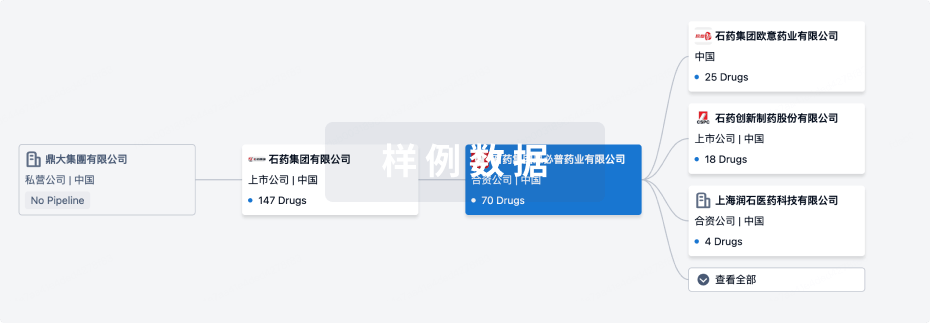
管线布局
2025年11月08日管线快照
管线布局中药物为当前组织机构及其子机构作为药物机构进行统计,早期临床1期并入临床1期,临床1/2期并入临床2期,临床2/3期并入临床3期
药物发现
14
55
临床前
临床1期
16
11
临床2期
临床3期
4
47
批准上市
其他
583
登录后查看更多信息
当前项目
| 药物(靶点) | 适应症 | 全球最高研发状态 |
|---|---|---|
维恩妥尤单抗 ( Tubulin x nectin-4 ) | 局部晚期尿路上皮癌 更多 | 批准上市 |
恩扎卢胺 ( AR ) | 前列腺癌 更多 | 批准上市 |
罗沙司他 ( HIF-PHs ) | 贫血 更多 | 批准上市 |
琥珀酸索利那新 ( M3 receptor ) | 膀胱过度活动症 更多 | 批准上市 |
米拉贝隆 ( GP IIb/IIIa ) | 膀胱过度活动症 更多 | 批准上市 |
登录后查看更多信息
药物交易
使用我们的药物交易数据加速您的研究。
登录
或
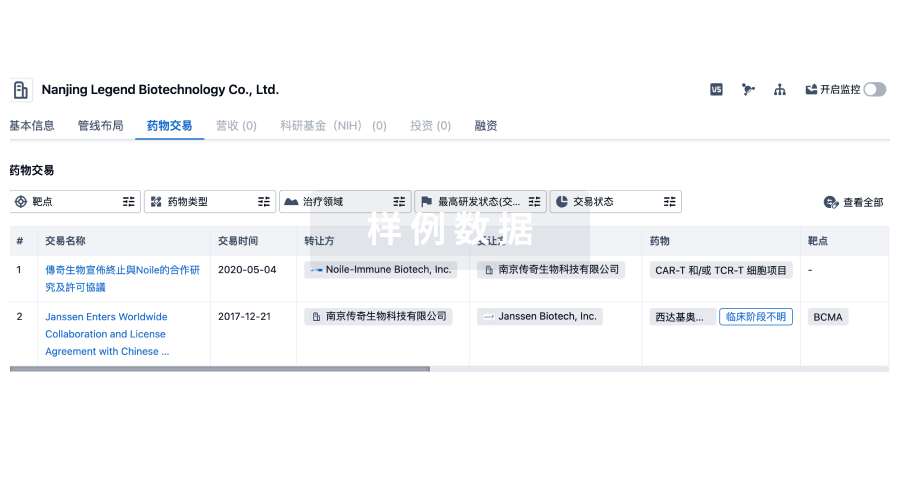
转化医学
使用我们的转化医学数据加速您的研究。
登录
或
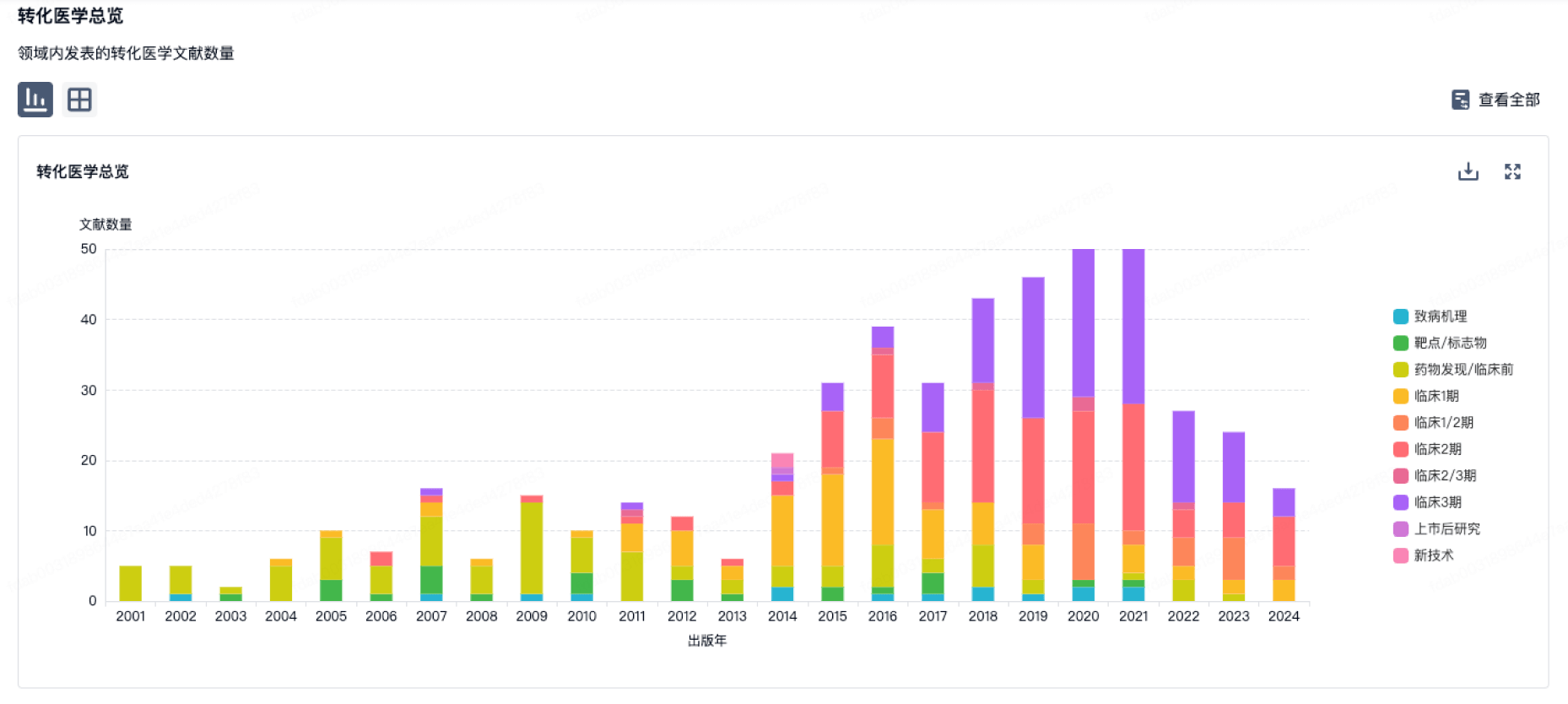
营收
使用 Synapse 探索超过 36 万个组织的财务状况。
登录
或

科研基金(NIH)
访问超过 200 万项资助和基金信息,以提升您的研究之旅。
登录
或
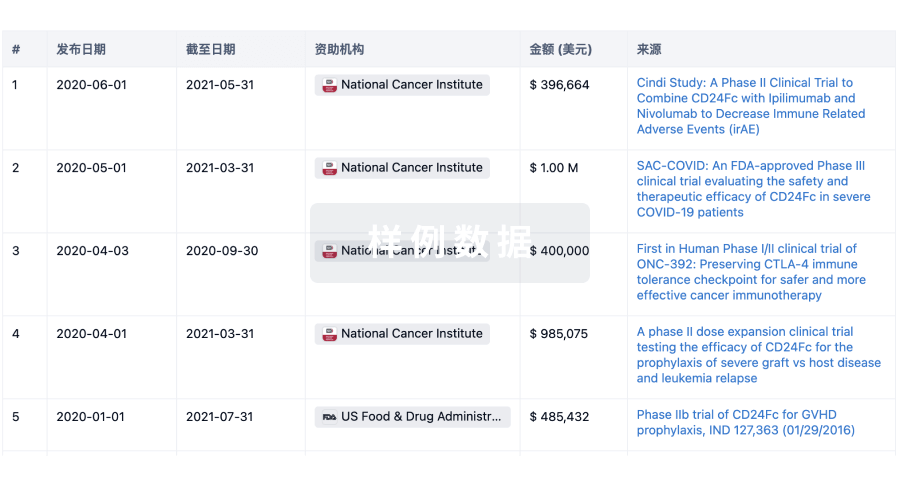
投资
深入了解从初创企业到成熟企业的最新公司投资动态。
登录
或
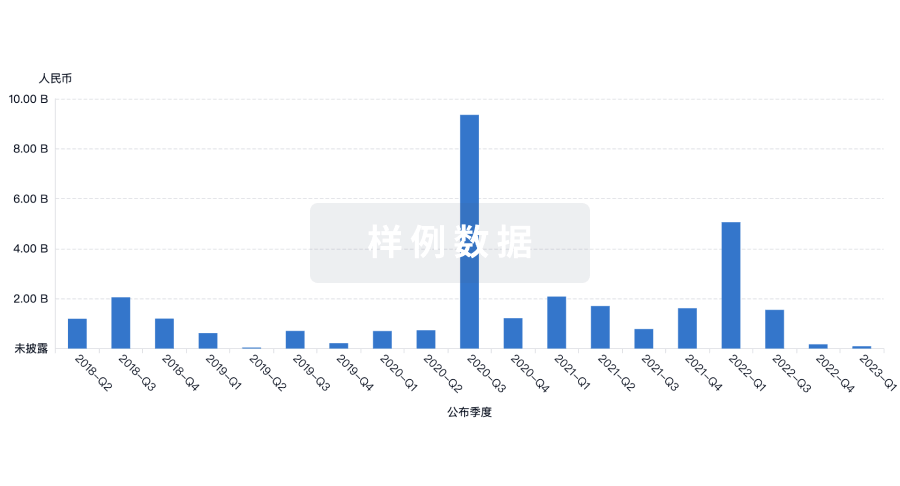
融资
发掘融资趋势以验证和推进您的投资机会。
登录
或
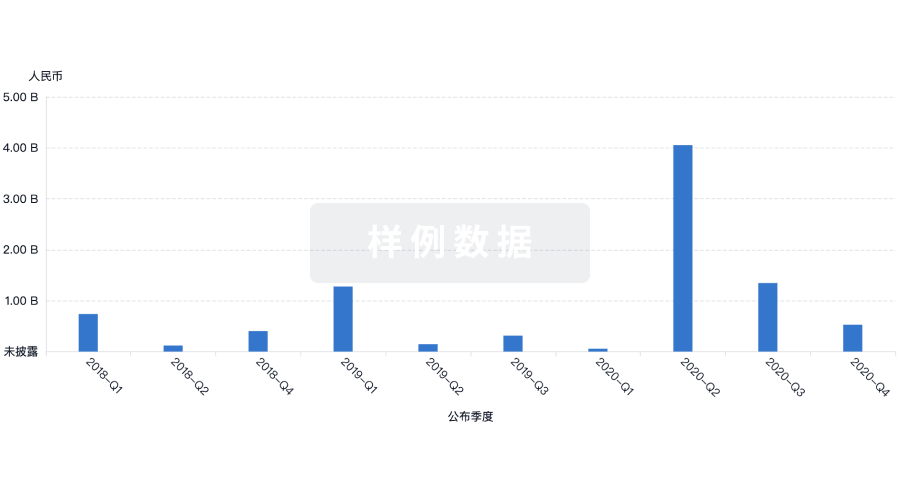
生物医药百科问答
全新生物医药AI Agent 覆盖科研全链路,让突破性发现快人一步
立即开始免费试用!
智慧芽新药情报库是智慧芽专为生命科学人士构建的基于AI的创新药情报平台,助您全方位提升您的研发与决策效率。
立即开始数据试用!
智慧芽新药库数据也通过智慧芽数据服务平台,以API或者数据包形式对外开放,助您更加充分利用智慧芽新药情报信息。
生物序列数据库
生物药研发创新
免费使用
化学结构数据库
小分子化药研发创新
免费使用




